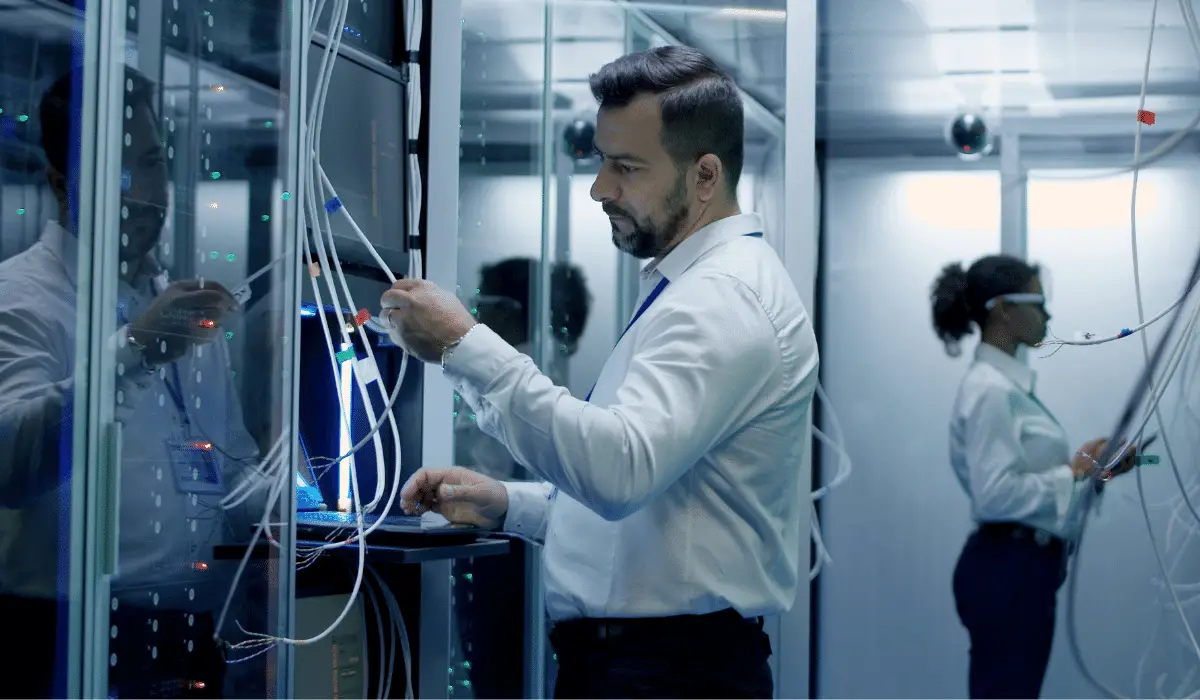There are some key factors to consider when buying a Data Center Infrastructure Management (DCIM) solution. Your choice should be based on the size of your business, your team’s technical expertise, how you’re using your data center, and your required features.
The best DCIM solutions offer integrations for other tools used by the company. The solution should be able to scale up or down based on your business needs. Remember that a good DCIM system will give you a complete view of your data center’s infrastructure and will enable you to improve business continuity, efficiency, and cost savings.
First, you need to find out what types of monitoring you need, key functions you require, ability to transform into additional features as your organization’s needs should grow with time, ease of use, and other factors that suit your business’ unique requirements.
Usually, IT infrastructure services cover administration, monitoring, troubleshooting, and optimization of corporate IT infrastructures. So, first of all, you should conduct an efficiency assessment and decide on what pool of services you really need.
When the infrastructure of a data center grows too large for manual management, an automated system like DCIM is required to ensure that all aspects of the environment are properly monitored and managed. The choice of which DCIM software to purchase can be overwhelming with so many options available.
5 Tips on How to Choose the Best DCIM Solution for Your Needs:
1. Define What Kind of Monitoring You Want: Physical or Logical?
Monitoring in a data center involves having information about the physical and logical components of your environment. Physical monitoring includes details on all hardware (e.g., servers, racks) and associated properties, for example, firmware version. Logical components include items like networks and network devices such as routers and switches.
See Also: Why Data Is Important in Business
2. How Many Sites Do You Want to Monitor?
Most data centers operate out of multiple locations which will require more than one software solution if using a single vendor for management. It is generally recommended that each site be managed by its own console but multi-site management does not need to be an entirely separate system as some DCIM solutions offer a master/slave configuration where an individual can connect several different locations into one master console so they can monitor all sites from one interface.
3. What Key Features Are Must-Haves for You?
Some of the most important DCIM capabilities include topology mapping, power metering (kW and kVA), environmental monitoring (temperature, humidity, etc.), thermal alerts, health status alerts e.g., cooling fans not working, energy management, (peak shaving, demand response) and business continuity planning (backups).

There are some tools that help manage DRP that provide capabilities like load balancing across systems during a failover scenario. Also, keep in mind that if you have multiple locations these need to be integrated so the system knows how to route data properly between all elements.
For example, if there is a power outage at a data center, will the system be able to transfer operations elsewhere?
You May Like: What Should Companies Do to Protect Cloud Data?
4. Is the DCIM Solution Able to Transform into Additional Features If Needed?
You should consider asking about whether or not the DCIM software provides APIs (application programming interfaces). APIs allow for third-party integrations with common business applications like Microsoft Office 365 Exchange Online & SharePoint, Oracle e-Business Suite, VMware vSphere & Horizon View, etc.
With an integrated API framework that covers many different types of platforms you can ensure easy integration with any other tools your organization uses (e.g., storage management, networking infrastructure). If your company is expanding its current cloud hosting services in addition to or in lieu of local server rooms you should look for a DCIM solution that is able to collect data from non-traditional devices like cloud servers and hypervisors.
5. What Size of Staff Is Required to Use the DCIM System?
Before you buy any software you should identify your technical and non-technical user base and their specific roles within your company (e.g., systems administrator, developer, end-user). The best solutions will not only be powerful enough to meet the demands of more complex environments but also simple enough to operate without extensive training or ongoing support from IT/engineering teams.
It’s important that the tool can easily integrate into your existing processes and workflows without compromising efficiency. You need to ensure that if someone on your team refers to the D-I-S-C assessment (discussed earlier in this article) it is easily accessible via your DCIM system.
See Also: What Are the Best Practices of Database Security?
Conclusion
Data center infrastructure management software is one of the best ways to take control of your data center. It helps make data centers more efficient and sustainable while enabling real-time business visibility for investment protection. Data centers are widely used today and many businesses are opting for cloud computing.
Harry O’Neill writes about all things tech, SaaS, and marketing at Solution Suggest. He’s known for turning complex ideas into clear, actionable insights. With experience working alongside top-tier companies worldwide, he helps brands connect with their audiences through content that drives real results.





















